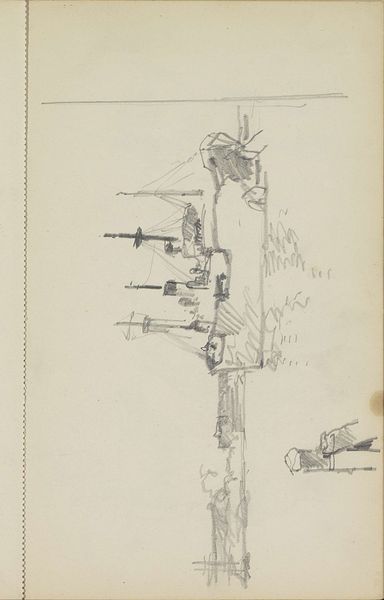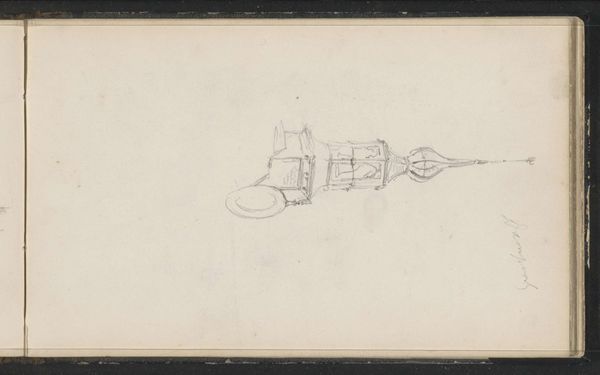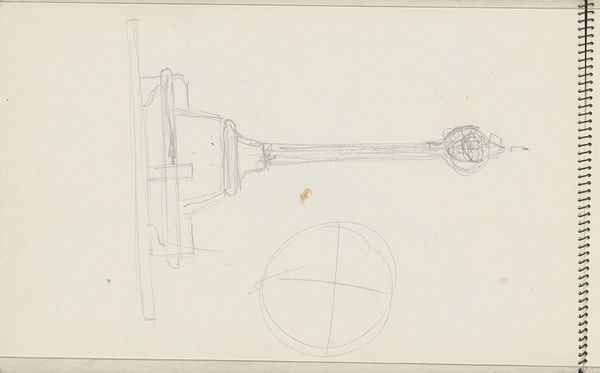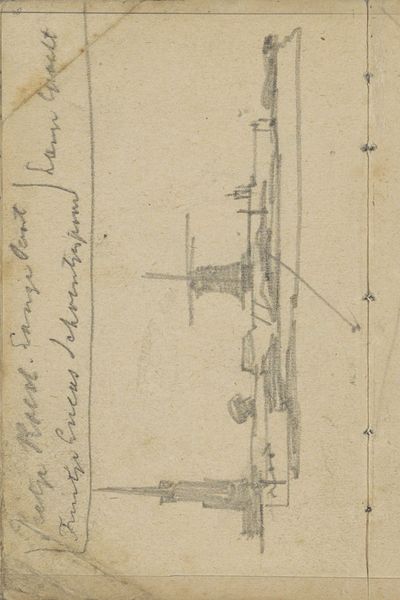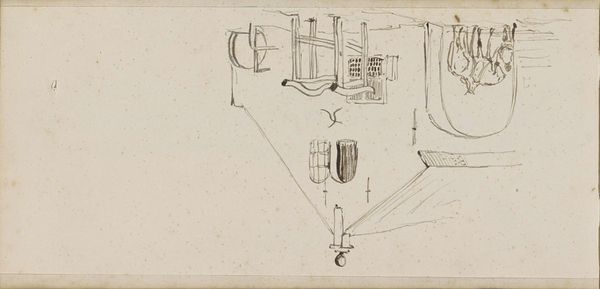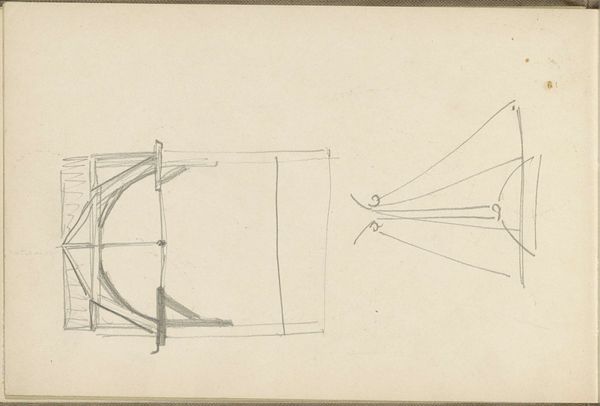
Copyright: Rijks Museum: Open Domain
Editor: This is "Koperen lampvoet," or "Copper Lamp Base," a pencil drawing by George Hendrik Breitner from 1908, housed in the Rijksmuseum. It has a really stark, unfinished feel to it. What strikes you most about it? Curator: I see more than just a preliminary sketch; I see a document reflecting the evolving urban landscape and its impact on individual experience at the turn of the century. How might this drawing speak to the social history embedded in everyday objects and interiors? Editor: The focus on something so mundane… I hadn't considered that. So, it's not *just* about the aesthetic? Curator: Precisely! Breitner lived and worked during a time of immense social change. The copper lamp base isn't simply a design element, but is tied into industrial advancements, urban electrification, and changing class dynamics. Consider the labor and resources involved in bringing such an object into being, and who would have owned such a thing. Does that change how you see the piece? Editor: Absolutely. Knowing that Breitner was so attuned to social issues gives the drawing new meaning. It almost feels like he is prompting us to consider access and labor conditions in a society being reshaped by industrialism. Curator: Precisely! By questioning the role of mass production, we invite broader conversations about consumerism, commodification, and access. Editor: So much more than just a lamp then. It's like a quiet act of social commentary. Thanks for illuminating that. Curator: My pleasure. It's crucial to always consider the social context that gives birth to a work; understanding the environment helps us connect with the art more profoundly.
Comments
No comments
Be the first to comment and join the conversation on the ultimate creative platform.
